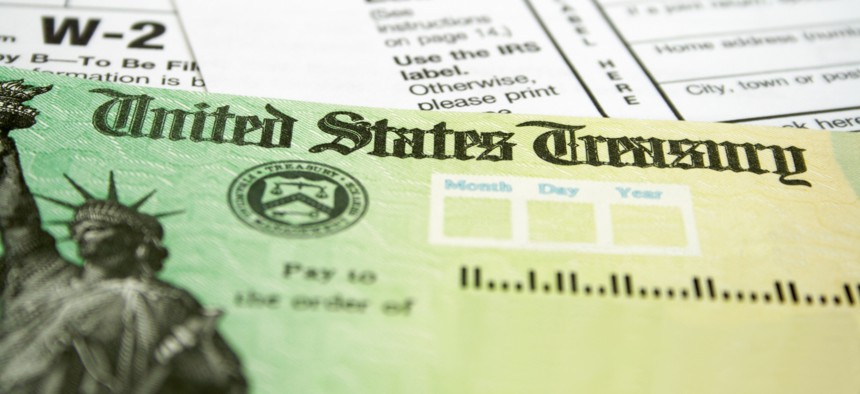
The President’s Pay Agent’s annual report on locality pay made adjustments to counties in Washington state set to take affect in 2025. agshotime / GETTY IMAGES
President’s Pay Agent OKs another tweak to locality pay areas
The counties of Clallam and Jefferson in Washington state could be included in the Seattle-Tacoma locality pay area as early as 2025.
The Biden administration on Monday has begun the queue of new regions to add to the federal government’s map where federal workers are entitled to higher pay for 2025, approving a recommendation to add Clallam and Jefferson counties in Washington state to the existing Seattle-Tacoma, Washington, locality pay area.
The Office of Personnel Management on Monday published the President’s Pay Agent’s annual report on locality pay, the practice by which the federal government supplements its compensation to employees under the General Schedule to address pay disparities between federal workers and their private sector counterparts in a given region.
In this year’s report, the pay agent, which is made up of OPM Director Kiran Ahuja, Office of Management and Budget Director Shalanda Young and Acting Labor Secretary Julie Su and acts upon the recommendations of a panel of political appointees and labor leaders, approved one change to the map of locality pay regions in the form of adding Clallam and Jefferson counties to the Seattle-Tacoma locality pay area. But federal employees in line for an additional pay raise from the decision will have to wait; OPM first must craft and publish regulations implementing the pay agent’s decision, which won’t be in place until the 2025 pay raise at the earliest.
Federal workers are on track to receive an average 5.2% pay raise in January, the largest feds have gotten in one year since the Carter administration, split between a 4.7% across-the-board increase to basic pay and a 0.5% average boost to locality pay. And thanks to a cavalcade of changes to the locality pay area map, both through traditional additions and updating the map to align with OMB’s map of metropolitan statistical areas, some 33,000 federal employees will see bigger raises than they are accustomed to for the first time in January.
The pay agent’s report notes that, had President Biden not issued his alternative pay plan in August, automatic increases to locality pay as prescribed by the Federal Employee Pay Comparability Act would have cost federal agencies $22 billion in 2024.
“Regarding budgetary concerns, this report includes an estimated cost of $22 billion for reducing GS pay disparities as originally intended by the statute,” the report states. “That cost would have a substantial impact on agency budgets. However, it is also important to emphasize that the underlying methodology for locality pay of relying on one single locality rate covering a locality pay area has lacked credibility since the beginning of locality pay in 1994 to such a degree that the statutory formula for closing pay gaps has been overridden either by Congress or by successive presidents every year since that first year.”
And the pay agent continued to call on lawmakers and stakeholders revamp the General Schedule pay system.
“As has been noted in earlier pay agent reports and discussed in other venues, we believe there is a need to consider major legislative reforms of the GS pay system, which continues to establish a single percentage locality rate in each locality pay area without regard to the differing labor markets and average salary levels for major occupational groups,” the officials wrote. “The current pay comparison methodology used in the locality pay program ignores the fact that non-federal pay in a local labor market varies substantially between different occupational groups. As currently applied, locality payments in a local labor market may leave some mission-critical occupations significantly underpaid while overpaying others.”
The Federal Salary Council, which examines whether to make changes to locality pay and submits recommendations each year to the pay agent, has scheduled its next meeting for next month.







